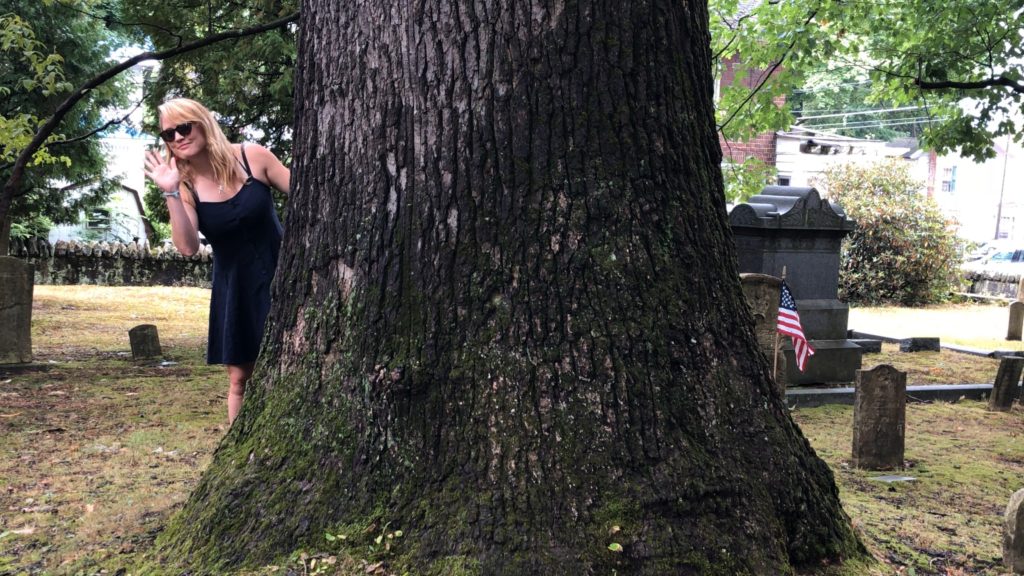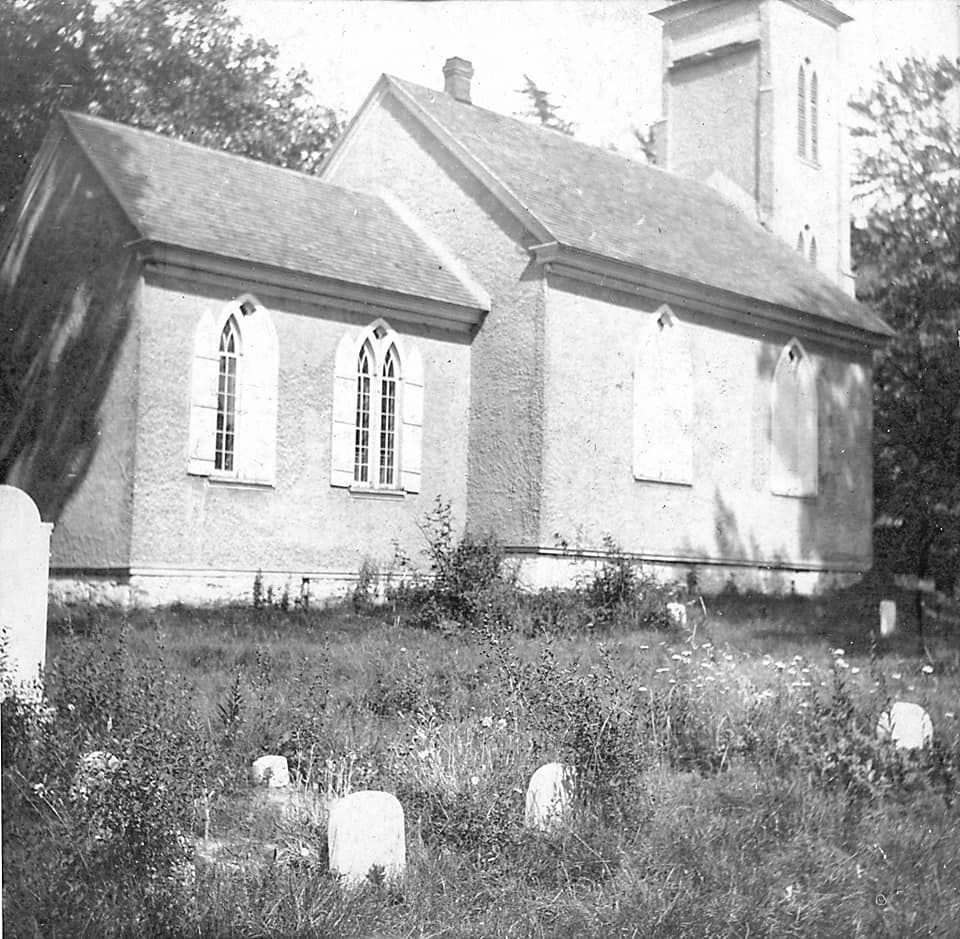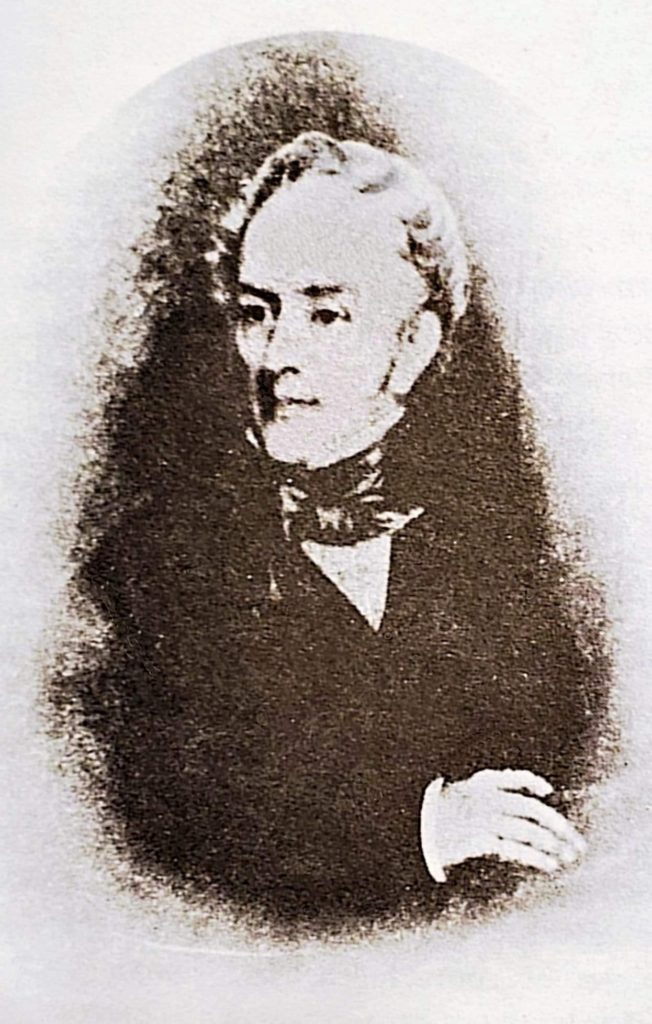
(Courtesy of the Philipsburg Historical Foundation) The Union Church, circa 1875. It is nicknamed the “Old Mud Church” for the rough cast plaster added to the original log structure.

(Courtesy of the Philipsburg Historical Foundation) The Union Church, circa 1875. It is nicknamed the “Old Mud Church” for the rough cast plaster added to the original log structure.
The quaint Union Church and Burial Ground is at the heart of Philipsburg’s history.
More than 200 years old, it is nicknamed the “Old Mud Church” for the rough cast plaster added to the original log structure. Around 1820, community members established it as “a house built which will answer the double purpose of a school and place of worship to be free for moral regular preachers of the gospel of all denominations.”
The Philipsburg Historical Foundation (PHF) maintains the building today and continues to preserve its chartered purpose as a meetinghouse for all to enjoy. However, the story of the Mud Church and Philipsburg itself begins with an old road, a nearly 400-year-old tree, and the determined family the town was named after.
The church stands on Presqueisle Street. This busy road, formerly the Old State Road, was commissioned into the area by 1796, allowing the Philips brothers to found Philipsburg the following year.
According to PHF member Teresa Mull, the Philipses came from England to Philadelphia to start an import-export business, acquired lands in central Pennsylvania, and seized the opportunity to establish a new town. The road brought Henry, and later, Hardman Philips and their families, as well as a number of original settlers from Philadelphia to claim lots in this untapped wilderness city, some sight unseen.

During the War of 1812, the road even brought iron and supplies to Commodore Perry’s fleet at Presque Isle in Erie. Presqueisle Street thus gets its name as the road to Presque Isle, Erie. By 1821, the road became part of a turnpike that stretched from Philadelphia to Erie.

In time, a place for burials became necessary in Philipsburg. Around 1802, George and Rosalie Shultz buried their infant daughter, Sally, who died from the croup, on their lot beneath the shade of the Founders Oak, which survives as one of the largest and oldest trees in Centre County. When it came time for the community to build a multipurpose meetinghouse circa 1820, this existing burial ground was the logical choice. According to local historian Chris Watson, there are more than 500 bodies on the grounds. By 1872, an ordinance required special permission for burials, because “almost without exception each new burial unearths some poor unknown soul.” The last known burial took place in 1907.
It was Hardman Philips who exchanged lots with the Shultz family and donated the burial ground to serve the Union Church. When Hardman arrived circa 1810, two of his brothers had already passed away, leaving him to take over the estate.

Hardman was a man who was willing to fight for what he believed in; a man who may have gone to prison in England had he stayed. According to Watson, Hardman was involved in a duel over a married woman and faced charges for wounding a man during the drama. So Hardman left his troubles across the pond, but certainly did not leave his convictions back home. Hardman was known to brandish his British Union Jack from his boat on the Cold Stream Dam. This may not seem unusual, but during the War of 1812 it was quite a statement, and a local shot the flagpole out of Hardman’s hands.
The church, like Philipsburg itself, received a healthy amount of funding from Hardman Philips. Hardman may have been too involved in the church when you consider its unifying charter. When the church was remodeled in 1842, Hardman provided much of the funding for the intricate gothic details, and a lawsuit ensued when he attempted to make the church Episcopalian. Hardman’s attempt to make the church his own failed, and he headed back to England in 1844.
One lasting reminder of Hardman is the church bell, which came from the Philipsburg Screw Factory that he owned. Although the factory burned down in 1836, it was one of the first screw factories in the United States. Hardman and his family were essential to the church, burial ground, and town that exists today.
Philipsburg’s history is not a story of one founder, or even one family. It took a community of determined people in addition to the Philipses to carve out a life in the wilderness of Pennsylvania. The Union Church was a light in that community where itinerant preachers served, school children learned, and town meetings, funerals, and weddings transpired.
Belated because of the pandemic, the Mud Church celebrates its 200th anniversary on September 18. Stay tuned to the Philipsburg Historical Foundation for details. Also, enjoy a series called Hidden Happy Valley that has featured the Mud Church in a video. View it here: https://youtu.be/bJP2APiBNws
Sources:
“History of Presque Isle State Park.” Commonwealth of Pennsylvania, 2021.
https://www.dcnr.pa.gov/StateParks/FindAPark/PresqueIsleStatePark/Pages/History.aspx
Linn, J. B. (1883). History of Centre and Clinton Counties, Pennsylvania. PA: L.H. Everts.
https://archive.org/details/historyofcentrec00linn/page/383/mode/2up
Watson, Chris. Union Church & Burial Ground Brochure. Philipsburg: Philipsburg Historical Foundation.
Local Historia is a passion for local history, community, and preservation. Its mission is to connect you with local history through engaging content and walking tours. Local Historia is owned by public historians Matt Maris and Dustin Elder, who co-author this column. For more, visit localhistoria.com.
Receive all the latest news and events right to your inbox.
403 S. Allen Street
State College, PA 16801
Phone: 814-238-5051
